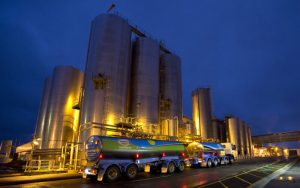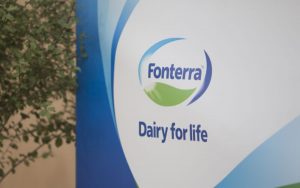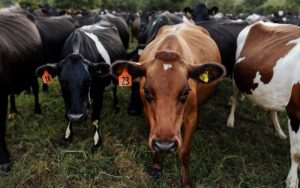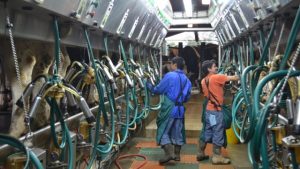
Rabobank’s action follows dairy giant Fonterra lowering its midpoint forecast to $9 a kg for the 2022-23 season after narrowing its range from $8.50 a kg-$10 a kg previously to $8.50 a kg-$9.50 a kg.
Rabobank suggested in its latest Global Dairy Quarterly report that dairy farmers would be walking the tightrope next year.
Milk supply appears to be finally growing after record farm-gate prices in many exporting regions this year.
However, as demand falters, the bank foresees farm-gate milk prices following global commodity market trends lowering next year.
“Subdued supply growth has kept dairy commodity prices relatively elevated, but fragile growth is on the horizon,” Rabobank senior agriculture analyst Emma Higgins said.
She said dairy demand was likely to reduce in the short term, as many economies experienced broad-based food inflation.
That said, the bank was resisting the temptation to reduce its own milk price forecast of $9 a kg.
“Our forecast is unchanged from last quarter, but it’s important to note the risks to this forecast are heavily skewed to the downside with any potential upside rally hinging on a supply shock in the northern hemisphere or a meaningful reopening of China in the new post-Covid world,” she said.
Westpac’s price forecast is at $8.75 a kg, BNZ is at $8.90 a kg and ANZ at $8.75 a kg, while earlier this month ASB retained its forecast of $9.40 a kg.
The global milk supply recession looks set to end after five consecutive quarters, driven by higher production in Europe and the United States.
Milk supply is expected to gain modest momentum next year in most regions apart from Australia, as its milk flows were affected again by poor weather in this year’s fourth quarter.
Next year milk flows from the Big Seven export regions of New Zealand, Australia, the EU, the US, Uruguay, Brazil and Argentina are expected to grow by 1%.
That was enough to offset this year’s 0.8% decrease, Ms Higgins said.
She said weaker prices in the fourth quarter varied between regions and products.
‘‘The large, domestically-supported cheese and butter markets in the EU and the US remain elevated, but off highs posted earlier this year. Meanwhile, a 9% decline in Oceania GDT index prices over the last three months has permeated through the global milk powder markets.”
Further headwinds over the next year are expected to come from expensive farm costs and buyers’ disposable incomes taking a hit. Emerging markets were most at risk from projected inflation rates.
While dairy demand in the US has remained defiant in the face of cost-of-living challenges, European consumers were now feeling the pinch.
Question marks remained over China over its future developments with Covid-19 policies and as the country works through local inventories and imported stock.
Domestically, fickle spring weather has left a mark on New Zealand milk production for the second season in a row.
“In a clear theme for this season, milk supply through to October 2022 is trailing by 3.6% year-on-year,” Ms Higgins said. ‘‘Otago-Southland is the sole region that is showing signs of milk production life, with feed plentiful in the south from warmer temperatures.”
She said that could result in milk production sliding by up to 2% for the full season.
Rising interest rates, fuel costs, and feed costs were leading the on-farm inflation challenge, she said.
Earlier this month Fonterra also upgraded its earnings guidance to 50c to 70c per share from 40c-60c after reporting a strong start to the 2022-23 season.
Chief executive Miles Hurrell revealed the positive start was despite the impact of geopolitical and macroeconomic events, with higher costs at every point in its supply chain.
He said it was a similar story behind the farm gate with farmer shareholders managing significantly higher input costs.
New Zealand milk production was down 2.9% on the same point last season, he said.
Fonterra has detected some softening of demand for whole milk powder, particularly in Greater China with other suppliers providing more milk.
The co-op’s profit after tax was up 84% to $214 million.

























